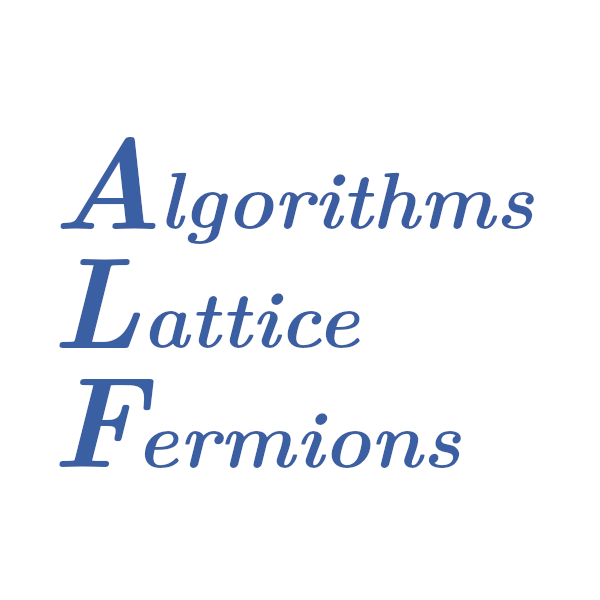Extended Hubbard model#
Model definition#
The model is defined as
The implementation supports all standard ALF lattices and the hopping as well as the interaction \(V\) are restricted to nearest neighbors. The parameter file for this specific model reads:
&VAR_extended_Hubbard !! Variables for the Extended Hubbard
ham_T = 1.d0 ! Hopping parameter
Ham_chem = 0.d0 ! Chemical potential
Ham_U = 1.d0 ! Hubbard interaction
Ham_V1 = 0.d0 ! nearest neighbor interaction
ham_T2 = 1.d0 ! For bilayer systems
Ham_U2 = 0.d0 ! For bilayer systems
Ham_V2 = 0.d0 ! For bilayer systems
ham_Tperp = 0.d0 ! For bilayer systems
Ham_Vperp = 0.d0 ! For bilayer systems
Mz = .T. ! Logical the choice of the HS field
/
In the above Ham_T, Ham_V, Ham_U are the nearest neighbor hopping, nearest neighbor interaction and Hubbard repulsion on the the first layer. Ham_T2, Ham_V2, Ham_U2 are the corresponding quantities on the second layer. Ham_Tperp, Ham_Vperp define the inter-layer couplings. Finally Ham_chem is the chemical potential. To use this Hamiltonian you have to specify:
&VAR_ham_name
ham_name = "extended_Hubbard"
/
in the parameters file.
In this formulation, there is some double counting of the Hubbard term. In particular expanding the square V-term gives the Hamiltonian:
In the above
For the single layer lattices with uniform \(U\) and \(V\), \(U^{eff} = U + Z V/2\) where Z=4 (Z=3) for the square (honeycomb) lattice.
If Ham_Mz = .T. the the code only works for SU(2) (N=2) spin symmetry and the Haniltonian is written as
up to a constant, and on each bond we use four fields to decouple the V-term. This formulation does better for sign problem full cases.
If Ham_Mz = .F. then the code is based on the first equation of the short discription. We use only one field per bond. In this case the sign problem is much more severe.
Observables#
The code has the standard observables. Note that the potential and total energies are defined as in the Hamiltonian. That is the file Ener_scalJ corresponds to
\(\langle \hat{H} \rangle\) with \(\hat{H}\) defined as in the first (Ham_Mz = .F.) and last (Ham_Mz = .T.) equations.
Limitations#
As it stands the Ham_Mz = .T. code is only programmed for the SU(2) case.
Tests#
On an \(L=6\) square lattice we have run the Ham_Mz = .T. at Ham_U = 1.5 and Ham_V = 0.75 and the Ham_Mz = .F. code at Ham_V = 0.75 and Ham_U = 0. We obtain \(-55.023 \pm 0.007\) and \(-55.033 \pm 0.001\) for the kinetic energy respectively.
